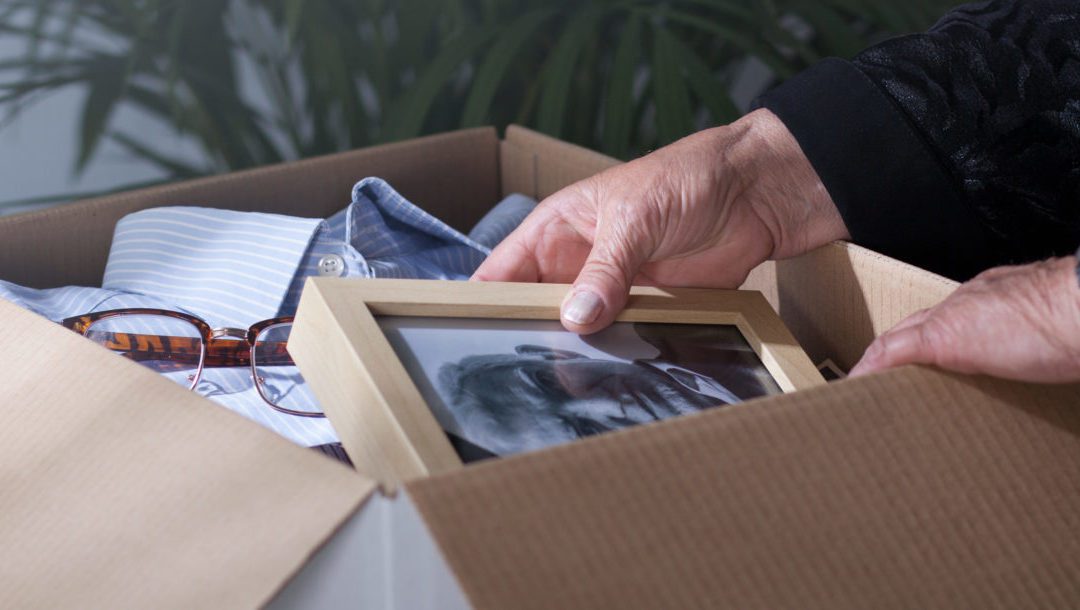A Guide of What and What Not to Pack
When moving yourself or your loved ones into an assisted living facility, it is important to make the new space comfortable to make the transition to this new phase of life as easy as possible. Moving can be an overwhelming experience for most, especially for seniors who are downsizing and may have to make some hard choices about which items they get to bring with them to their new home. This move to assisted living checklist should help make the transition smoother.
Before Moving Day
Most Assisted Living Facilities offer apartments that are unfurnished. However it is important to check what furniture, if any, will be in the space when you arrive.
Find your new floor plan and consider how much space you have. This will help you to narrow down how much as well as what furniture will be appropriate to bring with you.
Ask yourself questions about the lifestyle you or your loved one will be living in this space. These questions will help determine what other items they need to bring or how they may need to be arranged in the space. Some of these questions may include:
- Do you or your loved one entertain?
- Do you or your loved one cook for themselves?
- Do you or your loved one have any hobbies?
- Are you or your loved one able to clean for yourself or themself?
- Are you or your loved one able to bend down or reach up to reach items?
Before moving day it is also important to remind yourself or your loved one that they can always bring more later! With this in mind, it is always better to start with less and buy things or have them brought over from a loved one’s home as they are needed. Bringing too much to a new space can make it cluttered; this can make downsizing feel more drastic or make potential mobility issues worse.
Making A List
When making a list it is important to keep it organized. A good exercise for making this list is writing down what you need as you use things. As you or your loved one goes through a standard week in their lives, write down everything that you/they use. You may realize that you need to pack some things that you had not previously considered.
Clothing
It may be tempting to pack you or your loved one’s entire wardrobe up. However, it is likely that you/they may have limited closet space and it may be a burden to have all of those clothes there.
Consider the climate they will be in, the lifestyle they live, and the recreational activities that they partake in. If you or your loved one has mobility issues, it may also be helpful to consider the level of ease you/they have in getting dressed in each garment. All of these factors will help you to create a wardrobe that will fit the space and needs of you or your loved ones’ new environment.
Personal Items
When packing toiletries for a move, we often want to have every lotion, hair product, medication, and backups for everything that we think we will need on hand. However, it is important to remember that we can always get something later. It probably isn’t necessary to bring everything under the bathroom sink, and packing is a great opportunity to go through our toiletries and simplify what we want to bring.
Additionally, it is important to note that many Assisted Living Facilities provide residents with many services and amenities. Make sure to get a list of what will be provided before packing any additional items to avoid redundancies.
- Toiletries
- List of prescription medications and any over-the-counter medications
- Assistive devices – glasses, canes, walkers, hearing aid, etc.
- Important legal and financial documents (only needed for day of admit)
Furnishings
Consider the space you or your loved one are moving into and what makes the most sense for that space. It may be tempting to try and bring many familiar pieces of furniture into the new space to bring us comfort, however, limiting this to a favorite chair or familiar pieces of art may be a better way to bring the comforts of home to a new space.
Appliances may be provided or may need to be purchased. Consider how much cooking you or your loved one will be doing before bringing more than the basics. At GracePointe, the cooking is taken care of for our residents so you won’t need to bring those kitchen appliances.
One of the hardest parts of downsizing can be parting with favorite knick-knacks and decorations. However, to keep cleaning simple and space uncluttered, it is best to limit how many of these types of things we bring. Opting for art and photographs that hang on the wall is a way to make a space feel more comfortable without taking up too much room.
- Towels
- Linens
- Bedding
- Furniture
- Appliances
- Decor
- Photos and keepsakes
- Fan/heater/humidifier
- Clothes hangers
- Baskets and bins for organization
- Plants
- Mirror
- Hamper
- Small tool kit
- Clock
- Kitchen supplies
Entertainment
This category will differ drastically depending on your or your loved ones’ hobbies and interests. Consider what you/they like to do and what you/they need in your/their space in order to engage with those activities independently. Do you/they need sporting equipment, an e-reader, knitting supplies, baking supplies, etc?
- Books
- TV/radio
- Phone
- Computer
- Tablet/e-reader
- Electronics chargers
- Puzzles
- Playing cards
- Hobby supplies
Household Items
Check with you or your loved one’s facility regarding their meal plan and what, if any, products or services are provided in terms of cleaning and laundry. After you have this information, you can stock your or your loved ones’ home with any food items or cleaning products that they need.
- Broom and dustpan
- Surface wipes
- Multipurpose cleaning spray
- Stain remover
- Detergent
- Dish soap
- Snacks/groceries
- Paper products
Download Our Free Assisted Living Checklist
Save this checklist for later, or share it with your friends by downloading it today!
What Not To Pack
Cutting items from the list can be hard, but ditching these will be sure to make the transition to a new space much easier.
- Clothes/shoes/furniture in need of repair
- Oversized furniture
- Decorative items that sit on the floor
- More than just a few decorative items that sit on a table or shelf
- Holiday decorations during off season
- Duplicate items
- A lot of kitchenware – bring a few mugs not an entire collection
- Glass top tables
- Area rugs
- Seldom worn clothing, shoes, or jewelry
- Boxes or stored items
- Outdoor furniture – unless your new space has an outdoor space
- More than a few fancy outfits
When moving you or your loved one into Assisted Living Facilities, it is important to create an environment that you or your loved one will feel comfortable living in. This looks different for everyone and could be about placing a familiar quilt on the bed, putting a favorite photo on the nightstand, or having your favorite chair from home. Remember that the staff is also there to help you or your loved one settle in and getting to know people in your new community can be just as fruitful for making a new place feel like home.









